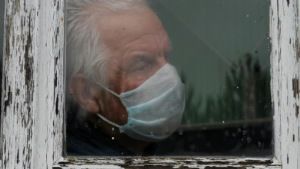News
COVID-19 a big healthy life cost in Denmark
This article is more than 3 years old.
Calculations from DTU and SSI indicate that people lost 30,000 healthy life years in the first year of the pandemic

A lot of healthy life years were affected by COVID-19 (photo: dissolve screenshot)
According to calculations by the Technical University of Denmark (DTU) and the State Serum Institute (SSI), people in Denmark lost a total of 30,000 healthy life years in the first year of COVID-19 – the equivalent of 13 years of healthy life lost per average person.
“COVID is currently the sixth leading cause of death in society. Cardiovascular disease, lung cancer and chronic obstructive pulmonary disease ranked first, second and third,” Steen Ethelberg, senior researcher at the State Serum Institute (SSI), told TV2.
This figure sounds outrageous, but based on this calculation, only Germany fared better in the first year of COVID-19 among the comparable countries.
Compared to countries such as the Netherlands and Scotland, where this calculation was also carried out, the result in Denmark was more favourable.
READ ALSO: Rising number of COVID infections in nursing homes
A more macro view of the pandemic
The first case of COVID-19 in Denmark emerged on 26 February 2020, so the calculation of the first year of COVID started then. The final results were obtained by combining the number of deaths and the number of infections in the previous 12 months.
The term ‘healthy life years’ here is not the same as life expectancy.
Healthy life years, also known as disability-free life expectancy (DFLE), is defined by the number of years a person is expected to continue living in a healthy state. Healthy status is defined here as having no functional limitations and no disabilities.
Steen Ethelberg believes this calculation provides a better understanding of the illness relating to other diseases and offer a new way to compare to other countries.










































